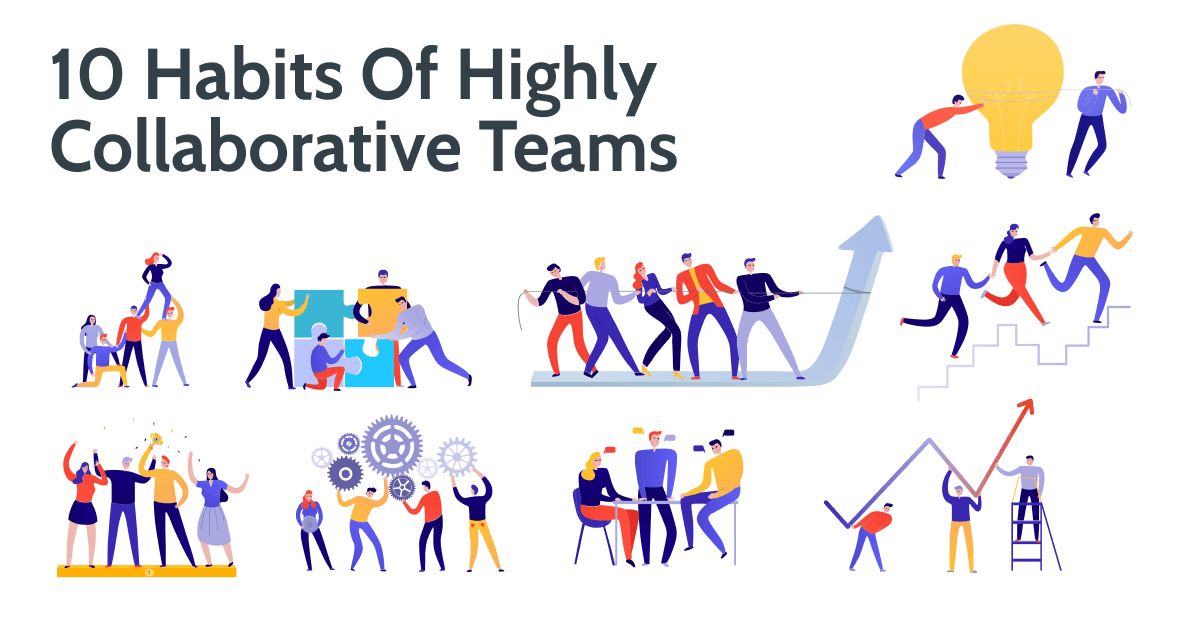Team is an important topic around here at Clinked – and of course it is!
An individual can get a lot accomplished on their own; put two individuals or three into a group on the same project and they can get even more accomplished. It’s when these individuals working on a project have a combination of motivation and alignment that magic can start happening. Pairing these foundational components with the right engagement through communication, openness and a bit of “fun” then add a dash of 21st century technology to strengthen transparency and connectedness – and voila you’ve got the makings of a solid team!
See what we did there – Motivation, Alignment, Engagement, Technology – when you take the first letters and hold it against a mirror or play word-mix-a-lot…you get TEAM. (Yeah, we thought that would get all you puzzle masters laughing & engaged).
Every team is different, just as each individual is. Some “teams” can be working groups or the dreaded cappuccino teams, however when you think of the best team you’ve ever been on there are usually a foundational elements that enabled its development and continued success.
On this summery day, we thought it would be fun to look deeper into these 4 foundational elements and share our findings to hopefully help those out these striving to create an outstanding team.
Technology
There are countless ways that technology benefits teams, facilitating the way that we work together and communicate. By using email, instant messaging, video and phone calls, e-calendars and more, technology has become the centre of many team’s work processes therefore shaping how we use it. As an example, organisations can save thousands in travel and accommodation costs by holding team conversations across global offices using systems such as StarLeaf to align expectations “in person” while gaining back productivity lost and stress often incurred by travel. On top of that - technology has also given teams additional freedom, enabling them to work remotely to meet life obligations and still have the facilities to drive productivity and collaborate effectively with teammates.
We all have examples good and bad of technology in team. Recently, we found an example of the power of technology in teams that was well put by a StarLeaf client, the legal firm Stone King in an article by AV Magazine recently:
“Like many modern firms we are rolling out a more flexible working policy with an agile approach to office working. Using a combination of hot desks, IT remote access systems and the ability to connect to office meetings using the StarLeaf desktop client, for the first time we can support our people working from home, at a client’s office or even in a coffee shop with full access to the communications systems that we have in our offices.” - Tim Roche, head of IT at Stone King
Engagement
Engagement is a crucial factor to building and maintaining a successful team. As leaders, it’s important to build trusted relationships with your team and try to gather whether they are engaged in their roles, and if they aren’t, evaluate why that is and what can be done to change it.
Dr Amy Armstrong from the Hult International Business School has focussed on employee engagement to understand how teams can best leverage 4 key zones of team engagement. She shared with Personnel Today:
“It’s up to leaders to have discussions with their teams to check everyone is in the right place. It might be the case that someone is new and therefore highly engaged, but that team dynamics change over time,” – Dr Amy Armstrong
When team members feel that they are valued by their teammates, it will push them to put in their best efforts and take pride in their role for that company. This will have huge benefits for their performance, the work that they are putting out and overall attitudes to work.
Alignment
Alignment of team members may sound like a statement more appropriate for a business school professor or start-up accelerator mentor than doing so in practice. However, this is essential across teams, particularly during the recruiting process. When hiring, discussing with the candidate how an individual will approach their participation helps the hiring manager or other team members evaluate their alignment with the “how” actions of the project. It also helps set expectations with the candidate.
What are the key points to create or evaluate alignment? To really achieve this, the group of individuals striving to become a team or an individual joining a team need to discuss their individual “why” for being part of the group and “what” role they play. This may change over time as the project or company progress, however it needs to be part of the team’s continual requirement to be mindful of alignment as the “how” actions are being planned and executed.
If you need motivation to bring this into your teams, keep in mind a statement by a famed pioneers of the US Industrial Revolution, Andrew Carnegie:
"Teamwork is the ability to work together toward a common vision, the ability to direct individual accomplishments toward organizational objectives. It is the fuel that allows common people to attain uncommon results."
Motivation
If you Google “Motivation” you’ll back over 1.3 Billion results - yes, that’s right - BILLION.

While there are billions of results (see above for proof), when it comes to motivation to join a work project there are usually key driving forces: 1. You’re told to (i.e. part of your job), and 2. You want to (i.e. career growth, interest, etc.). Given the diversity of those 1.3 Billion results, we found it easier to focus on these are the two classic examples of motivation, extrinsic and intrinsic.
When a team is made up as part of a “role” (i.e. extrinsic motivation) finding the common objective or purpose is key to stay on track. This is the easier of the paths as key KPIs or outcomes are part of the project keeping the project moving forward with internal processes driving the actions. However, when a team is developed around the “want” (i.e. intrinsic motivation) it’s key to keep communication open about the individual participation, expectations and desired outcomes from starting to ending.
Sir Francis Bacon once said, "Knowledge is power." - use knowledge of your own motivations and your teammate’s to succeed together.
Whether that team is made up for internal members, external clients or a combination of the two, Clinked allows any team make up to engage and collaborate in branded, secure and flexible settings to meet their common goals. We focus on where client knowledge lives; that intersection between internal engagement with external parties and how to holistically simplify that through a single platform.
Curious to learn more? Try it for yourself in a 10-day trial or arrange a demo with a member of our team to discuss your team’s use case. We look forward to learning with you!








Let Us Know What You Thought about this Post.
Put your Comment Below.